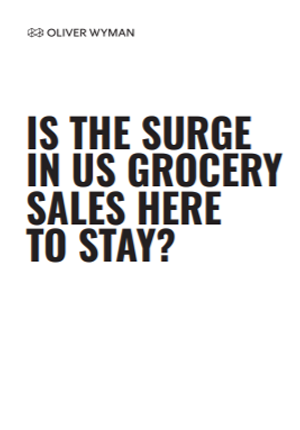It is no secret that the current COVID-19 pandemic has had far-reaching impacts on businesses, consumers, and society at large. While many sectors have been hit hard, others such as the United States grocery industry have experienced a surge in sales amid the crisis.
For these essential retailers, the month of March was “like the lead-up to Thanksgiving or Christmas”. Bank of America reported that card spend on groceries was up 36 percent in March year-over-year.
However, this has required a significant increase in costs, as grocers have needed to spend more on labor and transportation as well as stepped-up store hygiene measures and personal protective equipment in order to keep shelves stocked and shoppers and employees safe.
Now the question on everyone’s mind is: how is the topline likely to develop from here on? For now, the gains in sales have been enough to cover the increased costs. But are these sales sustainable or will they disappear? Worse, is there a trough just around the corner that will offset the recent spike in sales as consumers begin to draw down their pantries?
To answer these questions, Oliver Wyman has developed an in-house model to understand and forecast COVID-19 impacts on grocery topline over the next 18 months as the pandemic and its economic repercussions unfold.
Download the full report for more information.
